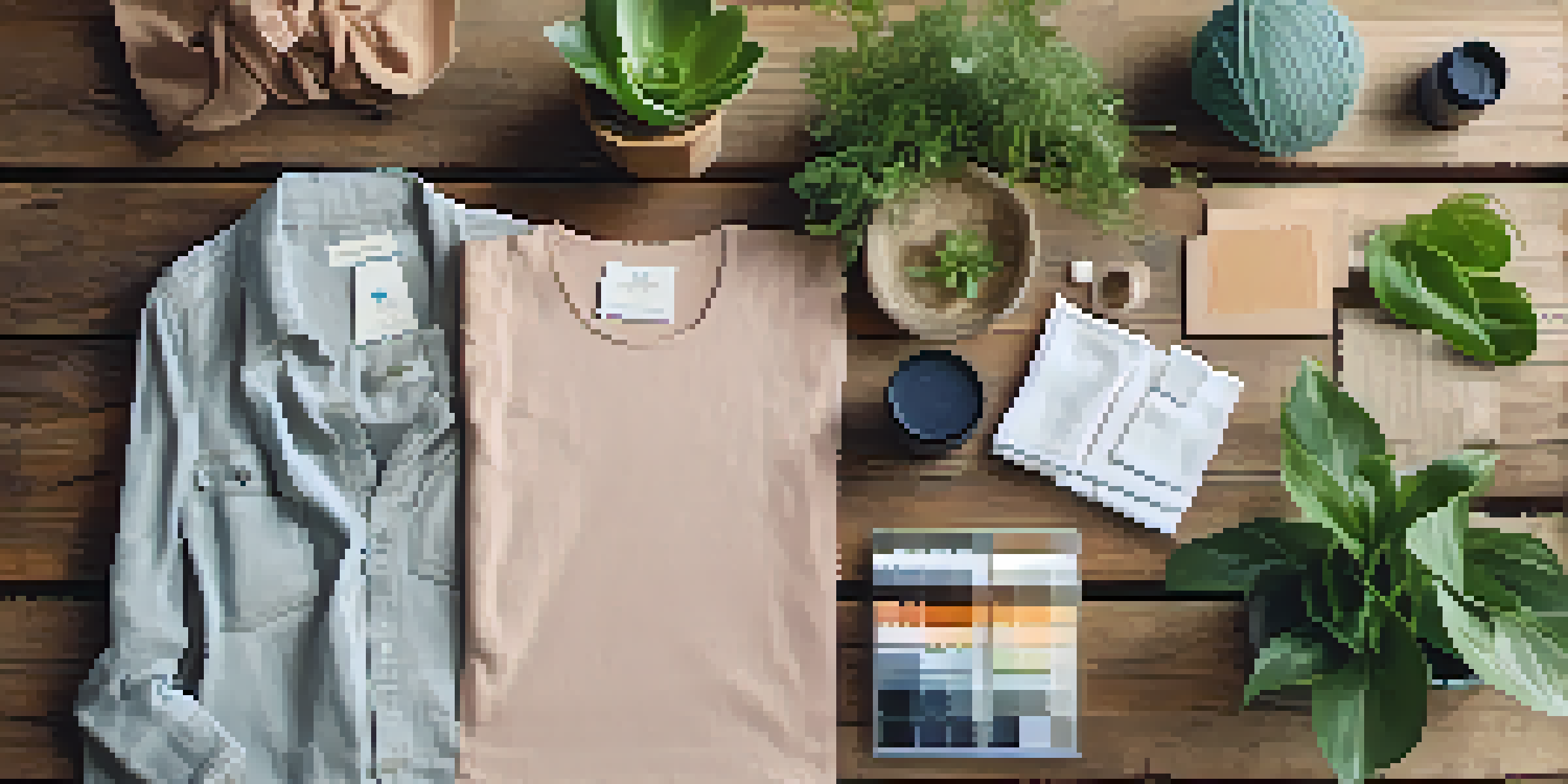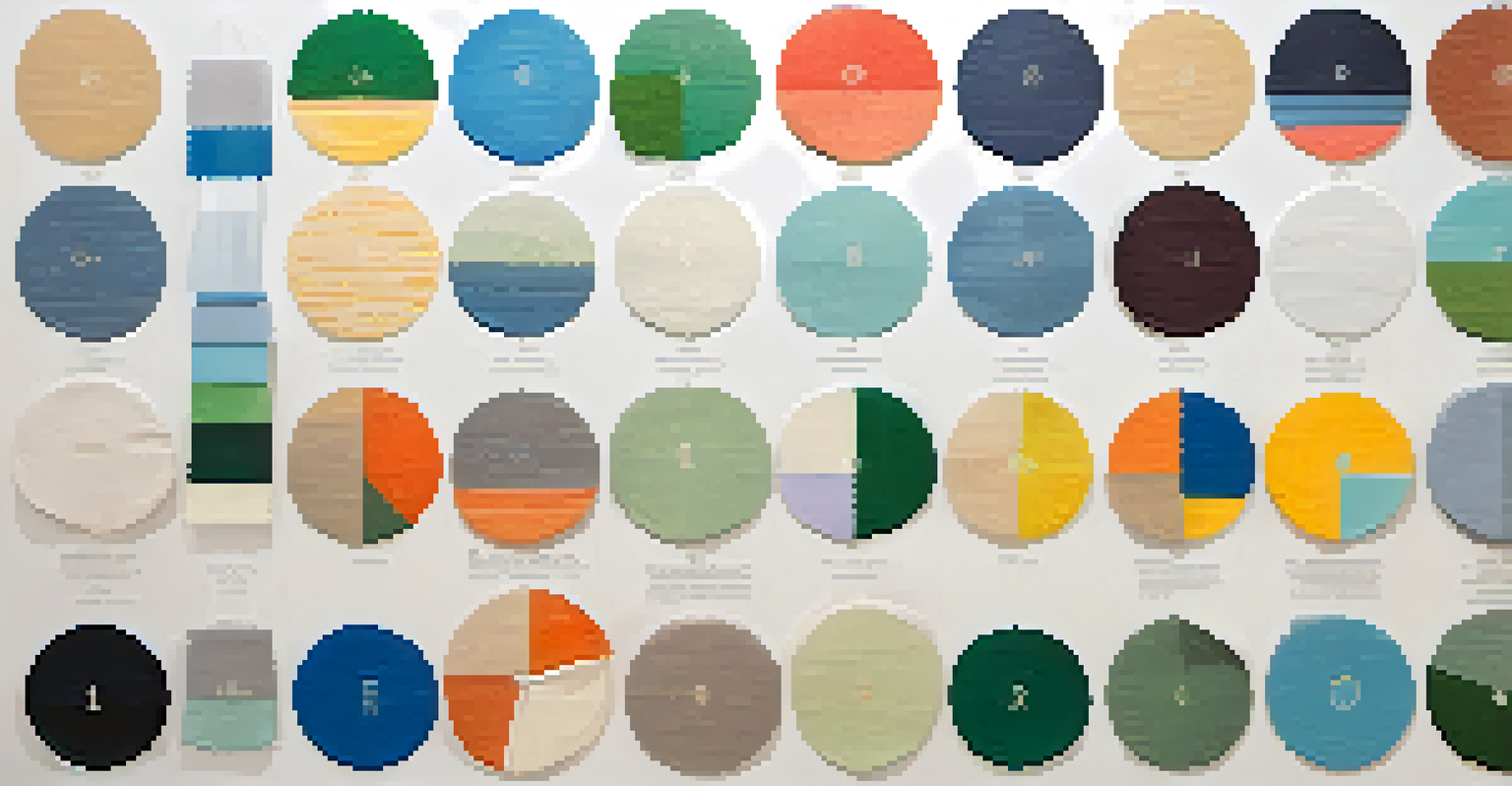Eco-Friendly Materials: Innovations in Sustainable Fashion

Understanding Eco-Friendly Materials in Fashion
Eco-friendly materials are those that minimize environmental impact during their lifecycle. This includes sourcing, production, and disposal processes. In the fashion industry, these materials are crucial for reducing waste and pollution, making sustainability a top priority for brands and consumers alike.
The greatest threat to our planet is the belief that someone else will save it.
Common eco-friendly materials include organic cotton, Tencel, and recycled polyester. Each of these materials has unique properties, such as breathability or durability, that contribute to fashion without harming the planet. By choosing these materials, brands can create stylish garments that align with eco-conscious values.
As awareness of environmental issues grows, consumers are increasingly seeking clothing made from sustainable materials. This shift in demand encourages more brands to innovate and adopt eco-friendly practices, ultimately transforming the fashion landscape for a greener future.
The Rise of Organic Cotton in Sustainable Fashion
Organic cotton is grown without synthetic pesticides or fertilizers, making it a safer choice for the environment and farmers. It uses less water compared to conventional cotton, which helps conserve this precious resource. This shift towards organic cultivation supports healthier ecosystems and promotes biodiversity.

Brands are increasingly incorporating organic cotton into their collections, appealing to eco-conscious consumers. For instance, many popular clothing labels have launched lines exclusively made from organic cotton. This trend not only highlights their commitment to sustainability but also raises awareness about the benefits of organic farming.
Eco-Friendly Materials Matter
Sustainable materials like organic cotton and Tencel are essential for reducing environmental impact in the fashion industry.
As more consumers prioritize sustainable fashion, the demand for organic cotton continues to rise. This encourages farmers to adopt organic practices, creating a cycle of positive change that benefits both the environment and communities. By choosing organic cotton, shoppers can feel good about their clothing choices.
Innovations in Tencel: A Sustainable Fabric
Tencel, made from sustainably sourced wood pulp, is gaining popularity in the fashion industry for its eco-friendly properties. The production process uses a closed-loop system that recycles water and solvents, reducing waste and pollution. This innovative approach makes Tencel not only sustainable but also energy-efficient.
Sustainability is not a trend; it's a way of life.
Tencel boasts a soft, breathable texture that rivals traditional fabrics, making it a favorite among designers. Its versatility allows for a range of clothing options, from casual wear to high-fashion pieces. Additionally, Tencel is biodegradable, meaning it won't contribute to landfill waste when discarded.
As brands embrace Tencel, consumers are treated to stylish and sustainable options. This fabric's growing presence in the market illustrates the potential for innovation in eco-friendly materials, paving the way for a more sustainable future in fashion.
Recycled Polyester: Turning Waste into Fashion
Recycled polyester is made from post-consumer plastic waste, such as water bottles, diverting materials from landfills. This innovative approach not only reduces the demand for new polyester but also helps to mitigate plastic pollution. It’s a fantastic example of how the fashion industry can address environmental challenges with creativity.
Many fashion brands have adopted recycled polyester in their collections, showcasing its versatility and performance. From sportswear to casual clothing, recycled polyester maintains the durability and comfort of traditional polyester while minimizing environmental impact. This shift demonstrates that sustainability can coexist with style.
Innovative Alternatives to Leather
Materials like Piñatex and Mylo are transforming the fashion landscape by providing sustainable alternatives to traditional leather.
By choosing garments made from recycled polyester, consumers can support the circular economy and contribute to reducing waste. This fabric symbolizes a commitment to sustainability, encouraging more brands to explore eco-friendly materials and practices in their production processes.
The Role of Hemp in Sustainable Fashion
Hemp is recognized as one of the most sustainable materials available, requiring minimal resources to grow. It thrives in diverse climates, needs little water, and naturally repels pests, reducing the need for chemicals. This hardy plant not only contributes to healthier soil but also absorbs carbon dioxide, making it a carbon-negative option.
Fashion brands are beginning to embrace hemp for its durability and versatility. From denim to activewear, hemp can be blended with other fibers to create high-quality fabrics. This resurgence in hemp usage showcases how traditional materials can be revitalized to meet modern sustainability demands.
As more consumers become aware of hemp's benefits, its popularity in the fashion industry is expected to grow. By supporting hemp-based clothing, shoppers can play a role in promoting sustainable agriculture and reducing the environmental footprint of their wardrobe.
Innovative Alternatives: Piñatex and Mylo
Piñatex, a leather alternative made from pineapple leaf fibers, is revolutionizing the way we think about textiles. This innovative material not only utilizes agricultural waste but also provides additional income for farmers. By transforming by-products into fashionable items, Piñatex demonstrates the potential of resourcefulness in sustainability.
Mylo, made from mycelium (mushroom roots), is another groundbreaking alternative to traditional leather. This biodegradable material offers a similar texture and durability as animal leather while being produced with a fraction of the environmental impact. Both Piñatex and Mylo showcase the creative possibilities that arise from sustainable innovation.
Consumer Demand Drives Change
As consumers increasingly prioritize sustainability, fashion brands are adapting by incorporating eco-friendly practices and materials.
These alternatives not only address ethical concerns surrounding animal products but also encourage the fashion industry to rethink its reliance on conventional materials. As brands adopt Piñatex and Mylo, consumers are presented with stylish, sustainable options that align with their values.
The Future of Eco-Friendly Materials in Fashion
The future of eco-friendly materials in fashion looks promising, as innovation continues to drive change. With advancements in technology, researchers are discovering new sustainable materials and improving production processes. This commitment to sustainability is reshaping the industry, pushing brands to prioritize eco-friendly practices.
Consumer demand for sustainable fashion is also influencing this shift. As shoppers become more conscious of their choices, brands are responding by adopting greener practices and materials. This evolving landscape encourages collaboration between designers, manufacturers, and researchers to create effective solutions.

Ultimately, the future of fashion hinges on our collective commitment to sustainability. By supporting brands that prioritize eco-friendly materials, consumers can contribute to a more sustainable industry while enjoying stylish, innovative clothing.